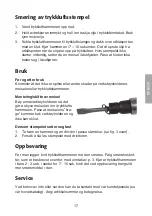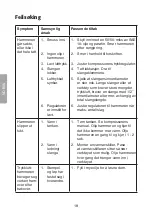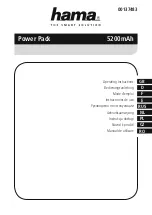
3
E
N
G
LI
S
H
7. Visually inspect the condition of the air hose before each use. Make sure
that all connections are secure.
8. Do not place your hands close to or under any moving parts.
9. Always secure the workpiece with vices or clamps when possible. Keep
your hands also away from the cylinder and retaining spring (for chisels)
when you use the hammer.
10. Do not exceed the tool’s maximum working pressure (6. bars).
Otherwise the tool’s operational life can be shortened.
11. The retaining spring must be used in order to hold the chisel locked
in place. If the chisel is not securely locked there is a major risk for
personal injury.
1. Do not misuse the product. Overly strong vibrations, repeated
movements in difficult to reach work areas can cause injury to the arms
and hands. Do not use the tool if you feel uncomfortable, numbness,
tingling or pain.
13. Never carry the tool by the air hose and never pull the air hose to move
the hammer or the compressor. Be careful not to expose the air hose
to heat, oil, and sharp corners. Change all hoses which are damaged,
weak, or worn out.
14. The hammer is not electrically isolated; avoid contact with all sources of
electricity.
15. Do not use the tool in a potentially explosive environment.
16. Use a face mask; working with certain materials can be harmful for the
operator.
17. Make sure to have good posture to avoid injuries in case of unexpected
jolts or if the chisel breaks.
18. Do not hold onto the chisel itself when operating the tool.
19. Disconnect the air hose when changing/inserting the chisels.
0. Only use the supplied chisels.
1. Use safety glasses, chiselling and punching can cause shards to fly from
the workpiece.
. Use ear defenders.
Summary of Contents for 30-6215
Page 27: ......




































